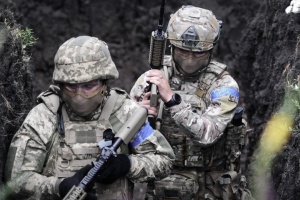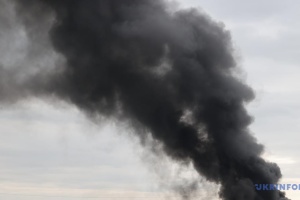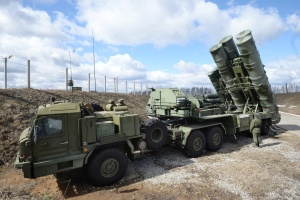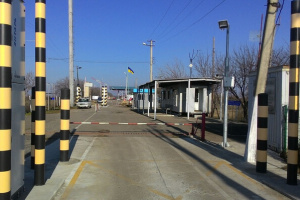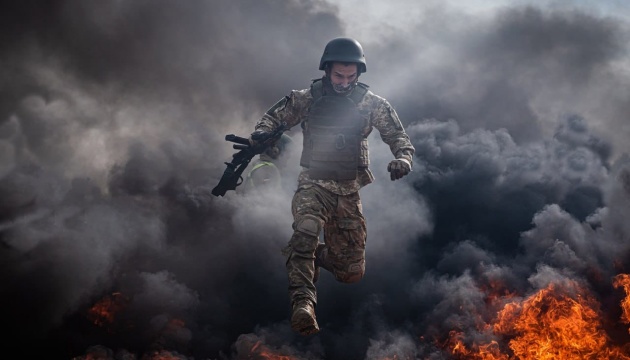
Objectively about situation on frontlines: alarming but promising
For three weeks now, the situation on the fronts of the Great War has been quite alarming. We often read that the situation is tense and sometimes not in our favor. To what extent is this true?
In the eastern sector, the enemy is attacking the positions of the Ukrainian military around the clock, using the tactic of "meat assaults". The situation is the hottest in the area of Andriivka, Lyman, Kupyansk and Maryinka. The situation is also restless near Bakhmut, which, after liberating Klishchiyivka and Andriivka in mid-September, the Ukrainian Armed Forces are trying to encircle.
Meanwhile, in the southern sector, where our troops have recently been active on the offensive, breaking through the first line of enemy defense, the so-called "Surovikin line," the frontline seems to be stagnant. And the forecasts of reaching Tokmak by the end of 2023 seem less optimistic every day. The occupiers are building more and more fortifications there, including concrete ones. 24/7, thousands of workers and construction workers are involved.
Why is this happening?
All summer long, Ukrainians have been convinced that the offensive is slow, because the Armed Forces of Ukraine, lacking sufficient aircraft and long-range missiles, cannot make a deep breakthrough. Therefore, they are grinding down the enemy army in order to start moving later. It would seem that the official reports of the General Staff confirm this: the occupiers have indeed suffered serious losses, but, as it turned out later, they are quickly recovering them - both by moving additional forces (according to Ukrainian intelligence, Russia has concentrated more than 400,000 soldiers on the territory of Ukraine) and by mobilizing new "bayonets", which amounts to 20-25,000 people every month. Yes, about the same number of occupants are killed or seriously injured at the frontlines, but it is what it is. So, it feels like the enemy is not getting smaller, it continues to push and push wherever it can.
So, how much longer will the Russian Federation be able to maintain such activity, how much more "meat" does the enemy have? What is happening on the frontlines of the Great War? Let's try to answer all these questions in order.
How the "infinite human resource" became the 'Achilles heel' of the Russian army
Oleksandr Kovalenko, a military observer of the Information Resistance group, says that it may indeed seem that Russia has an endless human resource that can parry any offensive of the Ukrainian army. But is this really the case?
"The Russian Federation, a country with a population of 140 million people, has a serious mobilization resource, which in a confrontation with a country like Ukraine should have a total quantitative advantage. But this obvious mathematics has its own nuance, and not just one. In the fall of 2022, the so-called partial mobilization was carried out in the Russian Federation, within which a little more than 300,000 people were drafted," the observer recalls.
This mobilization was carried out when, according to Russian Defense Minister Shoigu, the losses of the Russian army amounted to about 6,000 people, and according to the General Staff of the Armed Forces of Ukraine - about 50,000 personnel.
"It is clear that if the occupying army had lost only 6,000 people, they would not have had to draft 300,000. But this "partial" mobilization showed that there are not enough barracks, military units, training grounds, etc. for such a number," emphasizes Mr. Kovalenko. - "Starting in December 2022, mobilization in the Russian Federation allowed to attract 20-25,000 people per month. Thus, after the "partial" mobilization, another 200 to 250,000 people were forced into the army of the aggressor country. That is, the total number of people mobilized from September to September in Russia amounted to 500 to 550,000 people. But is this number enough and does it effectively solve the tasks set before the occupiers?"
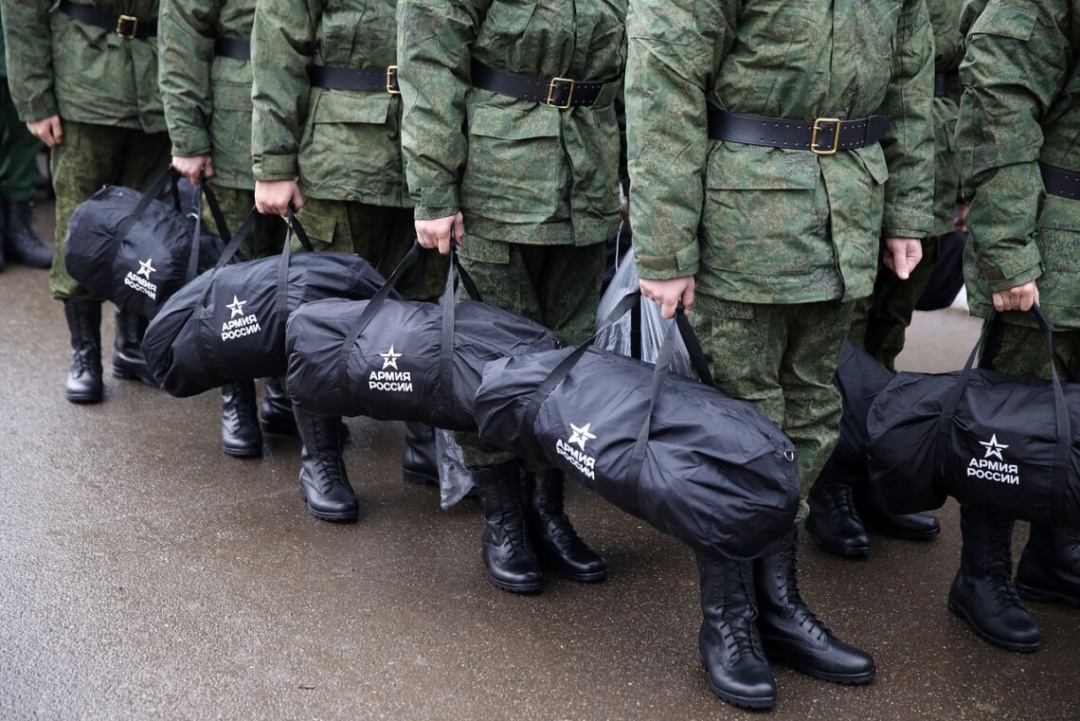
It would seem that Russia has mobilized more personnel over the past year than the Armed Forces of Ukraine utilized, and this fully covers the losses.
"At first glance, it seems so, but then why are there calls in Russia to ban the return of mobilized personnel until the so-called 'JFO' ends? There are more and more appeals from Russian women on the Internet, begging Putin to bring back their husbands, sons, and brothers from the "combat operations" where they have been without rotation for a year. The fact is that when we talk about losses, we primarily mean the "200s" (killed), some take into account the "300s" (wounded), the more pragmatic mention the "400s" (prisoners), and the particularly pedantic also mention the "500s" (refuseniks/deserters). But almost no one takes into account several existing needs," the expert emphasizes.
The first is to restore the combat capability of units. This is when a unit that has suffered losses incomparable to its combat missions needs to be urgently restored.
The second need is to create new units. People need to be recruited from somewhere to form new units in the rear, and in the short term they should not go to the combat zone. In other words, these people will not immediately be used to compensate for losses.
The third need is rotation. The units need to be rotated with equivalent units, which are simply not available.
"If we cover all these needs in full, the monthly mobilization in the Russian Federation should be from 40 to at least 50 thousand people. But this is not the case and is unlikely to happen - at least until after the 2024 elections," says Mr. Kovalenko. - "The resources that are now at the disposal of the ROA are significantly different from those that fought at the beginning of the full-scale invasion of Ukraine. And this difference is noticeable. After all, when the elite with many years of experience in the military were advancing, regions and districts were captured, and when the Russian army began to dominate the mobilization of resources, the offensives slipped to the size of a village or town, or to defenses that the Russians cannot hold. And the level of losses increased."
At the same time, the mobilization of mobile resources is used when the Russian military-industrial complex is unable to provide it on a full-time basis.
"Having called up more than 500,000 people, the Russian Federation has not been able to achieve even 10% of the goals that the group of 180,000 achieved in the first half of 2022," the analyst added.
And yet, even without any large-scale achievements in the combat zone, this resource slows down the advance of the Ukrainian Defense Forces.
"The human resource of the Russian occupation army (ROA) is not decisive in seizing territories, but it is quite effective as a brake. On the other hand, the Russians have a monthly compensation limit for losses. That is why increasing the level of losses of the ROA personnel is the solution to this problem," the military expert says.
That is, the destruction of more than 20,000 occupants per month is currently the most effective way to exsanguinate their defense potential. Of course, this should be done in conjunction with other actions to neutralize the enemy's potential: "For example, without a sufficient number of armored combat vehicles, the occupiers are forced to attack either by placing troops on the armor of tanks or using unarmored, civilian vehicles. This increases the number of casualties. And so on for each point."
In attack or defense, the enemy's main bet is on numbers. A decrease in these indicators will lead to the collapse of the defense. And we cannot say that this is unattainable. In January, February, and March 2023, this figure exceeded 20,000, which resulted in the "meat grinder" in Bakhmut. And it was then that Russia was forced to postpone the planned February offensive along the Lyman-Kupyansk axis and the offensive on Orikhiv and Huliaypole. In June, the losses of the Russian army also exceeded 20 thousand, and then the Russian occupation forces hastily brought units from other footholds to Zaporizhzhia region, as reserves began to be depleted very quickly.
"The Russian army is at a dead end, when the lost equipment cannot be restored to the front, and it will not be possible to compensate for its lack of human resources. The number of Russian troops and mobilization potential have always been called an advantage of the Russian Armed Forces, but it is also their Achilles' heel," emphasizes Oleksandr Kovalenko.
Well, an interesting conclusion. But in order to continue bleeding out the enemy 20,000 per month, we also need resources. And not only in terms of equipment, ammunition and gear...
"It is clear that we will not be able to quadruple our population, but we need to register the entire male population. Women associated with the Defense Forces of Ukraine - too," says Lieutenant General Ihor Romanenko, former Deputy Chief of the General Staff of the Armed Forces of Ukraine, in a comment to OBOZREVATEL.
Otherwise, we will not get out...
"Otherwise, someone will be knee-deep in water to defend our statehood, and someone will be organizing weddings worth millions of dollars and eating cakes worth a hundred thousand UAH each [referring to the scandalous wedding of former prosecutor Rostyslav Ilnytskyi and SBI employee Roksolana Moskva, which outraged Ukrainians with its luxury.] I'm not against weddings, I'm for them, we need to increase the birth rate, etc. But people are losing their sense of proportion. To prevent this from happening, the entire adult population must be accounted for and digitized so that it can be checked at any time. You are talking about the enemy's potential, but we don't have enough troops to take offensive actions right now. Therefore, we need to react quickly," Mr. Romanenko emphasized.
It is impossible to disagree with this conclusion, as the situation at the front is tense.
Avdiivka, Lyman, Kupyansk, Bakhmut... Assessment of the hottest spots in the frontline: how difficult is it there, what are the trends?
The Avdiivka sector remains one of the hottest spots in the frontline. Occupants are trying to encircle the city from the south and from the north.
The most difficult situation is in the north, where the occupants are pressing from Krasnohorivka to Stepove. Director of the Defense Express information and consulting company Serhiy Zgurets says that they are advancing in a narrow area, about 2 km wide: "Significant forces have been concentrated here, these are brigades of the 1st DPR Corps, brigades of the 2nd Combined Arms Army. The total losses of the attackers are enormous, but the enemy continues to advance and has approached the railroad in the north. In one of the sections, they are trying to break into the buildings of the coke plant, which are important elements of our defense line. The spoil heap next to the coke plant is in the gray zone."
At the same time, Vladyslav Selezniov, former spokesman for the General Staff of the Armed Forces of Ukraine, emphasizes: "The defense forces near Avdiivka are turning a huge number of enemy personnel and armored vehicles into ashes. The numbers are impressive, but the enemy, knowing that there is a very powerful engineering network of fortifications, continues to make frontal, meaty assaults. Perhaps they are dreaming that they will be able to implement the same plan as in Bakhmut. There, they lost up to 100,000 of their soldiers in killed and wounded during the 10 months of the assault. However, Avdiivka's defense system is more powerful, which means the enemy has a slim chance of at least some success."
Why is this city important for the enemy, what are the benefits of capturing it? Mr. Selezniov gives two reasons.
The first is that without Avdiivka it is impossible to move further west. And Putin dreams of conquering the entire Donbas. If 95% of Luhansk region is now under the control of the occupiers, then the enemy is in a bad way with Donetsk region.
Secondly, Russian generals are very nervous because earlier Ukrainian marines actually took control of Opytne [later, due to enemy aircraft and artillery, they had to retreat a bit.]
"And we know that beyond Opytne, the airport area begins - a suburb of Donetsk. So the enemy is making efforts to push the Defense Forces as far as possible," added the military expert.
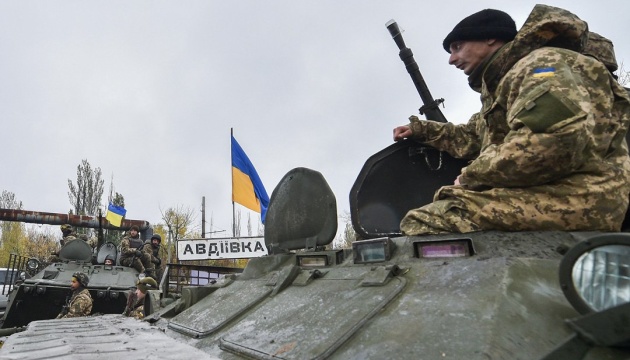
Roman Svitan, a reserve colonel in the Armed Forces of Ukraine, gives an encouraging forecast for Avdiivka: "The problem with Avdiivka is that the Russians, trying to surround it, have already advanced to the west, both from the north and from the south. They are unable to close the ring because our long-range artillery batteries, which are located near the Karlivka reservoir, do not allow the Russians to close the pincers. The wall of artillery fire of the Armed Forces of Ukraine holds them from the north - the so-called "Krasnohorivka tongue" - and from the south - in the area of Vodiane. We also have sniper gunners who cut off the Russians at a range of 25-30 kilometers, driving them into firebags, and sometimes driving them into minefields. We've been fighting there for 10 years, and every bush there is shot at."
The defense line there is properly and competently built, the military expert emphasizes. But to maintain a wall of fire, you need a sufficient amount of ammunition. The question is: is it there or not?
"Only the chief of staff [Valerii Zaluzhnyi] and the General Staff command know this. But there is information about Bradley and Leopards near Avdiivka. If this is true, it means that reinforcements have arrived there. Most likely, the command made a decision to reinforce them - equipment and ammunition arrived," believes Roman Svitan.
He also predicts serious problems for the Russians in the near future due to weather conditions in the Luhansk and Donetsk sectors and partially in the eastern part of the Zaporizhzhia front: "The soils there are fat, up to 80 centimeters of black soil. As soon as the water begins to flow, it is almost impossible to move there. This part of the front is already freezing, we can see it clearly. The eastern part of the Zaporizhzhia front, after we leveled it, has switched to active defense. The Donetsk and Luhansk directions will also switch to this mode."
As for the Lyman-Kupyansk direction, military expert Oleh Zhdanov said that it was there that he expected the enemy's main attack.
"The enemy has gathered the largest group of troops there - 100-110,000. But now we can say that Avdiivka is the main direction where the enemy is trying to gain the main operational success. Kupyansk is the direction of the second strike. They will also apply continuous pressure there in order to draw our reserves," he says. - "The enemy is building underground bunkers in this area. This means that the enemy is not going to launch a long-distance offensive here."
Military observer Oleksandr Kovalenko also believes that a new offensive by the Russian army in the Kupyansk-Lyman sector will not be more threatening: "We remember how they already launched offensive actions there in the summer. And what was the result? In fact, no result. Yes, now they have really launched attempt #2 in the Lyman-Kupyansk direction. But it is from the Luhansk region that the enemy is pulling combat-ready resources and units to Avdiivka. So I don't think their offensive in the Lyman-Kupyansk direction will be more powerful or more threatening than what we saw in the summer."
Finally, in Bakhmut, the Armed Forces of Ukraine offensive continues.
On the southern flank, i.e. east of the villages of Klishchiyivka and Andriivka, our forces are slowly but surely gnawing away meter by meter.
On the northern flank, the situation is less optimistic. According to DeepState analysts, the Russians have increased their pressure there and advanced in the forest belt northeast of Khromove. They also achieved partial success in the direction of the T-0504 highway, attacking from Bakhmut towards the village of Ivanivske. If the pressure continues, it could create problems for our striking fist.
Nevertheless, according to Oleksandr Musienko, head of the Center for Military Legal Studies, it is not worth saying that the Russians have seized the initiative near Bakhmut.
"It was noticeable before, the enemy did not give up trying to go on the offensive on the northern flank near Bakhmut. But this does not mean that the initiative has passed to Russian troops. Now in the east, Russia has become more active in various areas to draw our forces away from the south and put them on the defensive. And it will do this wherever it has the appropriate positions and prerequisites," the expert says.
Vladyslav Selezniov emphasizes that the situation near Bakhmut is dynamic.
"Somewhere we have an advantage, somewhere the enemy has the initiative. For example, south of Bakhmut, our assault units are fixing their positions along the railroad that connects Bakhmut with Horlivka. The enemy tries to counterattack every time, but fails. By the way, the railroad track runs along a very high embankment, which allows our advanced units to securely gain a foothold. The enemy is forced to retreat to the highway between Horlivka and Bakhmut and resist the Defense Forces there," he added.
We are not talking about stopping the front: what about the southern direction?
The expert community is now of the opinion that the offensive of the Armed Forces of Ukraine in the south has been stopped, that the front line there has not actually changed in recent weeks, that our forces are stuck, for example, on the Robotyne salient.
This is what DeepState analysts write with reference to the soldiers of the 46th separate airmobile brigade of the Armed Forces of Ukraine, which is fighting in the Melitopol sector: "Neither a combat nor a moral breakthrough will happen here, only fresh reserves can help, which, however, are forced to stretch due to the situation along the entire front. (...) A stalemate has developed on the Zaporizhzhia section."
At the same time, Russian counterattacks have increased, again, in Robotyne and in the area of Novoprokopivka, where the Armed Forces of Ukraine recently repelled a large-scale enemy attack but lost a Leopard tank.
So what can be said about this area objectively and without "betrayal"?
Oleksandr Musienko believes that our offensive actions in this area of the front are not yet complete and, one way or another, the competition for initiative between the parties continues.
"Russia has found a solution - to intensify fighting in the east to slow down our pace in the south. If they succeed in forcing us to redeploy our forces from Melitopol and other areas, it will be a partial success for the enemy. Until this happens, it is too early to set the final point of the 2023 offensive campaign to the south. Although we shouldn't expect any special breakthroughs either," he says.
According to Serhiy Hrabsky, in some areas of the Melitopol front we have withdrawn by 200 meters, and in some areas we have advanced by 200 meters: "We continue to carry out alternate attacks without any major changes on the map. We are trying to break through to the village of Kopani, continue active hostilities in the area of Novoprokopivka, trying to bypass the enemy and continue to develop the offensive on Tokmak, on the road T 0408."
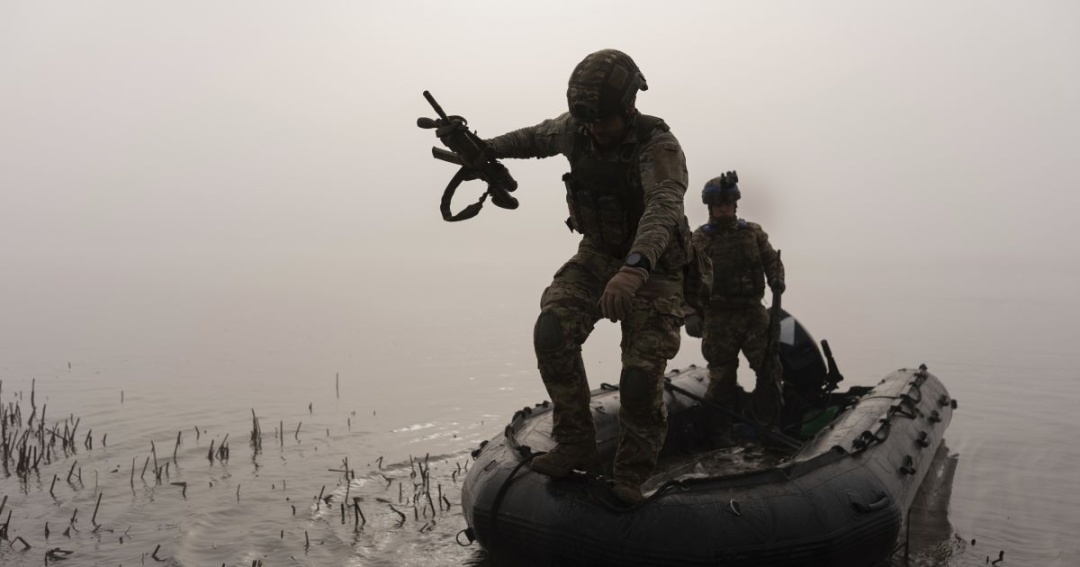
For several days now, Western analysts, including the American Institute for the Study of War (ISW), have been writing about another Ukrainian landing on the left bank of the Kherson region and the expansion of the bridgehead. The Ukrainian side has not officially confirmed this. According to Natalia Humenyuk, head of the press center of the Southern Defense Forces, combat work is being conducted in various ways, but they will talk about it only after the results are confirmed. She added that premature statements harm the Ukrainian military.
Despite the position of the official speakers, the fact that the Defense Forces are actually working on the left bank of the Kherson region in the area of Antonivskyi Bridge is "Polishynel's secret," emphasizes Vladyslav Selezniov. That is, a "secret" that everyone knows.
"The Ukrainian army holds the territory in the area of the railroad bridge up to the Verkhnya Konka River. The enemy cannot do anything about this expanding foothold," the military expert says.
In his opinion, it is unlikely that this bridgehead is a prerequisite for setting up a pontoon-bridge crossing and transferring a large number of personnel, armored vehicles, artillery and ammunition.
"Perhaps we should not talk about it now. The Dnipro is about a thousand meters wide here, and there are difficulties with setting up a crossing of this scale. In addition, it needs to be protected from enemy artillery and aircraft. That is why I think that the work of our marines is most likely related to forcing the Russians to divert their forces from other parts of the frontline," emphasized Mr. Selezniov.
Oleksandr Kovalenko: "I don't see anything so strange in what is happening on the left bank of the Kherson region, these are ordinary actions in the format of sabotage and reconnaissance work. Similar operations are being conducted in Zaporizhzhia, Donetsk and Luhansk regions. On the left bank of the Kherson region, such sabotage and reconnaissance activities began immediately after the right bank was liberated. Yes, they were not so noticeable at the time, because the entire left bank was occupied by the Russians. But one operation, the second, the tenth, the 30th, the 40th... The result is that the Russians are forced to leave their positions on the left bank, where they are either cut out or destroyed by shrapnel from artillery from the right bank night after night, week after week. As a result, a gray zone has appeared on the left bank," the observer says.
According to him, the Russian command has decided to return some of the units from the Dnipro group of troops stationed in Zaporizhzhia region to the left-bank Kherson region: "Some of these units are already near Oleshky. They have been returned to Oleshky and the Russian command feels a serious threat to their presence there. The gray zone will have to change its color at some point," hints Oleksandr Kovalenko.
According to General Viktor Yahun, what is happening on the left bank of the Dnipro River shows that the enemy miscalculated, thinking that we had thrown all our reserves to the south and east, and had nothing left beyond the Dnipro.
"The Russians were hoping that we would concentrate all our forces in the south and east and expose certain sections of the front along the Dnipro. It will be extremely unpleasant for the enemy if we really manage to advance on the left bank and capture a significant foothold there. If this happens, we will really be able to reach the coast, not the Azov Sea, but the Black Sea. Then the grouping of Russian troops in Zaporizhzhia and Kherson regions will find themselves in a strange situation. So, probably, the Russians will have to make a "gesture of goodwill" once again," predicts the former deputy head of the SBU.
Roman Svitan also raises the question: does the situation on the left bank of the Kherson region mark the beginning of something more serious? According to him, it will depend on how the Russians react to it. But. "We will win in any development of the situation. There are three possible scenarios, the military expert says.
The first is if the Russians react now and begin to transfer, say, from Avdiivka, Robotyne or Kupyansk to the Kherson direction to ensure the defense of the left bank.
"And this will be a win and the realization of the plans of General Valerii Zaluzhnyi and the General Staff of Ukraine. That is, we will stretch the Russian forces. We will eliminate the problem from Avdiivka, Robotyne and Kupyansk, and we will tie up the Russians in the Kherson sector. We are already winning, even if nothing else happens," emphasizes Mr. Svitan.
Another possibility is that the Russians will not withdraw their units from the front to try to eliminate our bridgehead: "So, the bridgehead will expand, and we will move the front line away from Kherson. This is the second task - to remove Russian army artillery from Kherson, to cover the city from attacks."
And the third...
"If the Russians don't respond to this either - for various reasons, maybe they just don't have the means - then the road to Armiyansk in Crimea is open. This is what we have been talking about for at least six months," the expert emphasized.
In the context of the situation in the south, Roman Svitan again mentioned the weather conditions. While the eastern front will face serious problems when it starts raining, he said, the southern front will not.
"The western part of the Zaporizhzhia front and the Kherson direction are not as prone to bad weather as the eastern regions. And we will definitely take advantage of it. No one will freeze the advance in the main direction towards Tokmak. If we have enough forces and means, we can cross the Dnipro and move towards Armiyansk. The weather is not closing the window on the western front. On the contrary, we can reinforce some positions there, because the Russians, unlike us, have a very large arm of military equipment delivery. They have to travel 500-700 kilometers to Tokmak in the rain and mud. Our delivery arm is short - Zaporizhzhia is close by. It is advantageous for us to attack there," the military expert summarized.
Myroslav Liskovych. Kyiv

